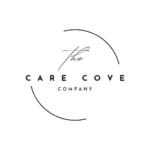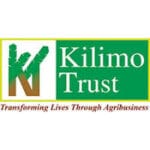AboutLife Sciences
‘Life Sciences’ is the scientific study of living things from molecular level to their interactions with one another and their environments. To be accepted as a science, it is necessary to use certain methods for broadening existing knowledge, or discovering new things. These methods must lend themselves to replication and a systematic approach to scientific inquiry. The methods include formulating hypotheses and carrying out investigations and experiments as objectively as possible to test these hypotheses. Repeated investigations are carried out and adapted. The methods and results are analysed, evaluated and debated before the community of scientists accepts them as valid.
Knowledge production in science is an ongoing endeavour that usually happens gradually but, occasionally, knowledge and insights take a leap forward as new knowledge, or a new theory, replaces what was previously accepted. As with all knowledge, scientific knowledge changes over time as scientists improve their knowledge and understanding and as people change their views of the world around them. Scientific investigations are mostly about things that are poorly understood or not understood at all. Scientists are frequently involved in debates and disagreements. As more people take on such investigations, they tend to reach consensus about the ways in which the world works. The science theory that is taught in schools has been tested and is generally accepted. A good teacher will inform learners of debates and arguments among the scientists who were the first to investigate a phenomenon.
Scientists continue to explore the unknown. They tackle questions to which no-one has definite answers, such as: ‘Why is the climate changing?’; ‘What is causing the universe to expand?’; ‘What causes the Earth’s magnetic field to change?’; and ‘What, exactly, is the human mind?’. No one knows for sure
By studying and learning about Life Sciences, learners will develop:
- their knowledge of key biological concepts, processes, systems and theories;
- an ability to critically evaluate and debate scientific issues and processes;
- greater awareness of the ways in which biotechnology and knowledge of Life Sciences have benefited humankind;
- an understanding of the ways in which humans have impacted negatively on the environment and organisms living in it;
- a deep appreciation of the unique diversity of past and present biomes in Southern Africa and the importance of conservation;
- an awareness of what it means to be a responsible citizen in terms of the environment and life-style choices that they make;
- an awareness of South African scientists’ contributions;
- scientific skills and ways of thinking scientifically that enable them to see the flaws in pseudo-science in popular media; and
- a level of academic and scientific literacy that enables them to read, talk about, write and think about biological processes, concepts and investigations.
Life sciences as a school subject
- Biochemistry;
- Biotechnology;
- Microbiology;
- Genetics;
- Zoology;
- Botany;
- Entomology;
- Physiology (plant and animal);
- Anatomy (plant and animal);
- Morphology (plant and animal);
- Taxonomy (plant and animal);
- Environmental Studies; and
- Sociobiology (animal behaviour).
At school level, all of these sub-disciplines are introduced, to varying degrees, to provide a broad overview of the subject, Life Sciences. The three main reasons for taking Life Sciences are:
- to provide useful knowledge and skills that are needed in everyday life
- to expose learners to the scope of biological studies to stimulate interest in and create awareness of possible specialisations; and
- to provide a sufficient background for further studies in one or more of the biological sub-disciplines.
The organisation of the life sciences Curriculum
The Life Sciences content framework is organised according to four ‘knowledge strands’. Knowledge strands are
developed progressively over the three years of FET. These knowledge strands are:
- Knowledge Strand 1: Life at the Molecular, Cellular and Tissue Level;
- Knowledge Strand 2:Life Processes in Plants and Animals
- Knowledge Strand 3: Environmental Studies;
- Knowledge Strand 4: Diversity, Change and Continuity.
These Knowledge Strands and the topics within each knowledge strand should not be studied separately or independently. The Knowledge Strands do not need to be taught in the same sequence each year, nor do all four Knowledge Strands have to be covered in each year. This categorisation is simply a tool for organising the subject content and they are also not weighted equally. When teaching Life Sciences, it is very important to help learners to recognise the links between related topics so that they acquire a thorough understanding of the nature and inter- connectedness of life. These links must also be made across grades.
life sciences: Concept and Content Progression
| strands | life at molecular, cellular, and tissue level | life processes in plants and animals | diversity, change and continuity | environmental studies |
| Grade 10 | Chemistry of lifeInorganic compoundsOrganic compoundsCell – unit of lifeCell division (mitosis)Plant and animal tissues | Support and transport systems in plants Support systems in animals Transport system in mammals | Biodiversity and classificationHistory of life on Earth | Biosphere to ecosystems |
| Grade 11 | Energy transformations to support life: photosynthesisAnimal nutritionEnergy transformations: respirationGas exchangeExcretion | Biodiversity – classification of microorganismsBiodiversity – plantsReproduction – plantsBiodiversity – animals | Population ecologyHuman impact on environment: current crises | |
| Grade 12 | DNA code of LifeRNA and protein synthesis Meiosis | Reproduction in vertebrates Human reproductionNervous systemSensesEndocrine systemHomeostasis | Darwinism and Natural Selection Human evolution | Human impact on environment: current crises Grade 11 |
The content framework focuses on ideas, skills and concepts as well as connections between them, rather than on listing the facts and procedures that need to be learned. It also does not prescribe particular instructional strategies or methodologies. Instead, educators have the freedom to expand concepts and to design and organise learning experiences according to their local circumstances, including the availability of resources.
in Grade 10, all four Knowledge Strands are addressed and serve to introduce learners to the four strands.
The recommended Grade 10 teaching sequence for the four Knowledge Strands is:
- Life at Molecular, Cellular and Tissue level (Molecules to organs)
- Life Processes in Plants and Animals (Processes that sustain life)
- Environmental Studies (Biosphere to Ecosystems)
- Diversity, Change and Continuity (History of Life on Earth)
The rationale for this order In Grade 10 is that some areas of South Africa are best suited for an environmental study during early spring and also because seasonal comparisons in a chosen ecosystem are required where possible. Some teachers may elect to deal with the Environmental Study at the beginning of the year. However it is important to retain the sequence of Knowledge Strand 1 before Knowledge Strand 2 and Knowledge Strand 3 before Knowledge Strand 4. Decisions regarding the sequence (starting the year with Knowledge Strands 1 and 2 or starting the year with Knowledge Strands 3 and 4) must be made by teachers.
The first section in Grade 10, called “Subject Orientation”, is designed to prepare learners for the FET phase, and is
intended to:
- connect what learners learned in the GET (Natural Sciences) with what they will be learning in the FET (Life Sciences). The Life Sciences subject builds on knowledge and skills acquired from the Life Sciences knowledge areas in GET.
- describe how knowledge is built/constructed in science, and introduces the scientific approach that both teachers and learners are required to use when teaching and learning Life Sciences.
- introduce learners to some basic principles related to science.
- familiarise learners with the range of skills that they will need to develop.
The orientation should be done in the first lessons as an introduction but is not part of the assessable curriculum although the principles and skills will be assessed in the context of specific content during the year. Learners will have been exposed to similar orientations at the start of the Senior Phase (Grade 7) and at the start of High School (Grade 8). The orientation on Grade 10 should then simply remind learners of what is expected of them and expand on some of the aspects.
in Grade 11, three of the four Knowledge Strands are addressed and serve to ensure progression. The content described in Life at Molecular, Cellular and Tissue level in Grade 10 is used to understand Life Processes in Plant and Animals in Grade 11 but it is not taught as a separate strand in Grade 11.
The recommended Grade 11 teaching sequence for the three Knowledge Strands is:
- Diversity, Change and Continuity (Microorganisms, Plants and Animals)
- Life Processes in Plants and Animals (Processes that sustain life)
- Environmental Studies (Population Ecology and Human Impact)
in Grade 12, three of the four Knowledge Strands are addressed and serve to ensure progression. The content described in Environmental Studies: Human Impacts (Current Crises) is dealt with in Grade 11 in order to lessen the pressure in Grade 12 but this Knowledge Strand will be examined in the National Senior Certificate examination at the end of Grade 12.
The recommended Grade 12 teaching sequence for the four Knowledge Strands is:
- Life at Molecular, Cellular and Tissue level (DNA and protein synthesis)
- Life Processes in Plants and Animals (Processes that sustain life)
- Diversity, Change and Continuity (Darwinsim and Human Evolution)
- Environmental Studies (Human Impact, taught and assessed in Grade 11)
The identified range of cognitive and practical skills must be taught, and assessed, in an integrated way in the context provided by the topics in the four Knowledge Strands in each year in the FET band.
the Purpose of studying life sciences
- The development of Scientific Knowledge and Understanding
Scientific knowledge and understanding can be used to answer questions about the nature of the living world around us. It can prepare learners for economic activity and self-expression and it lays the basis of further studies in science and prepares learners for active participation in a democratic society that values human rights and promotes acting responsibly towards the environment.
- The Development of Science Process Skills (Scientific Investigations)
The teaching and learning of science involves the development of a range of process skills that may be used in everyday life, in the community and in the workplace. Learners can gain these skills in an environment that supports creativity, responsibility and growing confidence. Learners develop the ability to think objectively and use different types of reasoning while they use process skills to investigate, reflect, synthesise and communicate.
- The Development of an Understanding of Science’s Roles in society
Both science and technology have made a major impact, both positive and negative, on our world. A careful selection of scientific content and the use of a variety of methods to teach and learn science should promote the understanding of science as a human activity as well as the history of science and the relationship between Life Sciences and other subjects. It also helps learners to understand the contribution of science to social justice and societal development as well as the need for using scientific knowledge responsibly in the interest of ourselves, society and the environment. Moreover, understanding science also helps us to understand the consequences of decisions that involve ethical issues.
Specific Aims
There are three broad subject-specific aims in Life Sciences which relate to the purposes of learning science. These are:
- Specific Aim 1, which relates to knowing the subject content (‘theory’);
- Specific Aim 2, which relates to doing science or practical work and investigations; and
- Specific Aim 3, which relates to understanding the applications of Life Sciences in everyday life, as well as understanding the history of scientific discoveries and the relationship between indigenous knowledge and science.











